| Queen's House | |
|---|---|
| General information | |
| Town or city | Jaffna |
| Country | Sri Lanka |
| Client | Government of Sri Lanka |
Queen's House was a former official residence of the President of Sri Lanka in Jaffna. A former Governor's residence during the colonial period, it was used by the Governor General of Ceylon until Sri Lanka became a republic. It was used by Presidents William Gopallawa and J. R. Jayewardene when visiting Jaffna. It was built in the 17th century as the residence of the commander of the colonial garrison of the fort. Situated within the Jaffna fort, it was damaged to a great extent during the course of the Sri Lankan Civil War and is currently under renovation.
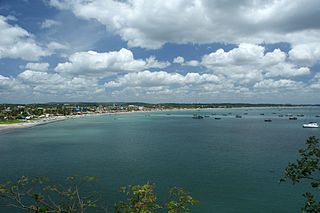
Trincomalee, historically known as Gokanna and Gokarna, is the administrative headquarters of the Trincomalee District and major resort port city of Eastern Province, Sri Lanka. Located on the east coast of the island overlooking the Trincomalee Harbour, Trincomalee has been one of the main centres of Sri Lankan Tamil speaking culture on the island for nearly a millennium. With a population of 99,135, the city is built on a peninsula of the same name, which divides its inner and outer harbours. It is home to the famous Koneswaram temple from where it developed and earned its historic Tamil name Thirukonamalai. The town is home to other historical monuments such as the Bhadrakali Amman Temple, Trincomalee, the Trincomalee Hindu Cultural Hall and, opened in 1897, the Trincomalee Hindu College. Trincomalee is also the site of the Trincomalee railway station and an ancient ferry service to Jaffna and the south side of the harbour at Muttur.

The Sri Lankan independence movement was a peaceful political movement which was aimed at achieving independence and self-rule for the country of Sri Lanka, then British Ceylon, from the British Empire. The switch of powers was generally known as peaceful transfer of power from the British administration to Ceylon representatives, a phrase that implies considerable continuity with a colonial era that lasted 400 years. It was initiated around the turn of the 20th century and led mostly by the educated middle class. It succeeded when, on 4 February 1948, Ceylon was granted independence as the Dominion of Ceylon. Dominion status within the British Commonwealth was retained for the next 24 years until 22 May 1972 when it became a republic and was renamed the Democratic Socialist Republic of Sri Lanka.

The burning of the Jaffna Public Library took place on the night of June 1, 1981, when an organized mob of Sinhalese individuals went on a rampage, burning the library. It was one of the most violent examples of ethnic biblioclasm of the 20th century. At the time of its destruction, the library was one of the biggest in Asia, containing over 97,000 books and manuscripts.
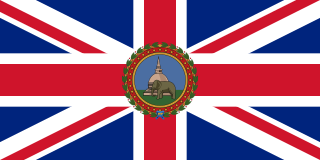
The governor of Ceylon was the representative in Ceylon of the British Crown from 1795 to 1948. In this capacity, the governor was president of the Executive Council and Commander-in-Chief of the British Forces in Ceylon. The governor was the head of the British colonial administration in Ceylon, reporting to the Colonial Office.

Dutch Ceylon was a governorate established in present-day Sri Lanka by the Dutch East India Company. Although the Dutch managed to capture most of the coastal areas in Sri Lanka, they were never able to control the Kingdom of Kandy located in the interior of the island. Dutch Ceylon existed from 1640 until 1796.

Vaddukoddai is small but important town in the minority Sri Lankan Tamil dominated Jaffna peninsula of Sri Lanka. This place famous to Cultural Dances & Hindu rituals.
Operation Liberation also known as the Vadamarachchi Operation was the military offensive carried out by the Sri Lankan Armed Forces in May and June 1987 to recapture the territory of Vadamarachchi in the Jaffna peninsula from the LTTE. At the time it was the largest combined services operation undertaken by the armed forces deploying multiple brigade-size formation, becoming the first conventional warfare engagement on Sri Lankan soil after the end of British colonial rule. The operation involved nearly 4,000 troops, supported by ground-attack aircraft, helicopter gunships and naval gun boats. The offensive achieved its primary objective, however operations were suspended when the Indian government dropped food supplies over Jaffna in Operation Poomalai on June 4, 1987, which prompted the Sri Lankan government to accept the Indo-Sri Lankan Accord.
President's House is the official residence and workplace of the President of Sri Lanka, located at Janadhipathi Mawatha, Colombo, Sri Lanka. Since 1804 it had been the residence of British Governors and Governors-General and was known as the "King's House" or the "Queen's House" until Sri Lanka became a republic in 1972.
Forts in Sri Lanka date back thousands of years, with many being built by Sri Lankan kings. These include several walled cities. With the outset of colonial rule in the Indian Ocean, Sri Lanka was occupied by several major colonial empires that from time to time became the dominant power in the Indian Ocean. The colonists built several western-style forts, mostly in and around the coast of the island. The first to build colonial forts in Sri Lanka were the Portuguese; these forts were captured and later expanded by the Dutch. The British occupied these Dutch forts during the Napoleonic wars.

Kopay is a Sri Lankan town about 4 km from the city of Jaffna along Point Pedro road. An agricultural town consisting mainly of vegetable farms, paddy fields and coconut gardens. The suburb Kopay has several scholars because of very strong schooling system. Arumuka Navalar established the school managed by Suwaminathan is famous for this. Arrival of Church Missionary Society (CMS) strengthened the educational system. Kopay Christian College is one of the oldest schools in Jaffna with 150 years of service remain unbeaten in producing quality scholars.

Lascarins is a term used in Sri Lanka to identify indigenous soldiers who fought for the Portuguese during the Portuguese era (1505–1658) and continued to serve as colonial soldiers until the 1930s. The lascarins played a crucial role not only in the colonial armies, but also in the success of the campaigns of the local kingdoms.
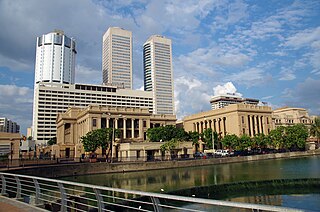
Fort (Colombo) (Sinhala: කොටුව; Tamil: கோட்டை) is the central business district of Colombo in Sri Lanka. It is the financial district of Colombo and the location of the Colombo Stock Exchange (CSE) and the World Trade Centre of Colombo from which the CSE operates. It is also the location of the Bank of Ceylon headquarters. Along the foreshore of the Fort area is the Galle Face Green Promenade, built in 1859 under the governance of Sir Henry George Ward, the Governor of Ceylon (Sri Lanka) during British colonial era. Fort is also home to the General Post Office, hotels, government departments and offices.

The Northern Province is one of the nine provinces of Sri Lanka. The province has an area of 8,884 km2, making it the 3rd largest province by area, and a population of 1,061,315, making it the least populated province. Jaffna is the capital city of the province.
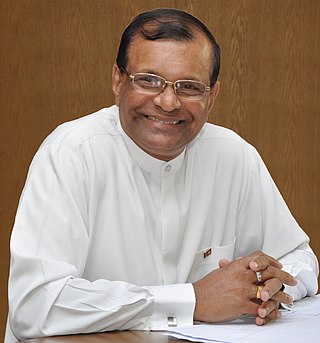
Major General Gammanpila Arachchige Chandrasiri, RWP, USP, ndc, psc, SLAC was a Sri Lankan senior army officer and a provincial governor. He is the Governor of Northern Province. He was the former Commander Security Forces Headquarters - Jaffna ; General Officer Commanding, 52 Division;, Director General - General Staff, Joint Operations Headquarters; Brigade Commander Armoured Brigade, and Commander, Area Headquarters Mannar.

Jaffna is the capital city of the Northern Province of Sri Lanka. It is the administrative headquarters of the Jaffna District located on a peninsula of the same name. With a population of 88,138 in 2012, Jaffna is Sri Lanka's 12th most populous city. Jaffna is approximately ten kilometres from Kandarodai which served as an emporium in the Jaffna peninsula from classical antiquity. Jaffna's suburb Nallur served as the capital of the four-century-long medieval Tamil Jaffna Kingdom.

Jaffna Fort is a fort built by the Portuguese at Jaffna, Sri Lanka, in 1618 under Phillippe de Oliveira following the Portuguese invasion of Jaffna. The fort is located near the coastal village of Gurunagar. Owing to numerous miracles attributed to the statue of the Virgin Mary in the church nearby, the fort was named as Fortress of Our Lady of Miracles of Jafanapatão. It was captured by the Dutch under Rijcklof van Goens in 1658, who expanded the structure. In 1795, it was taken over by the British, and remained under the control of a British garrison until 1948. As the only large military fort in the country, because of the presence of only government and military buildings within its ramparts, it was garrisoned by a detachment of the Ceylon Army.

General Anuruddha Leuke Ratwatte, frequently referred to as Anuruddha Ratwatte, was a Sri Lankan politician and a retired army officer. He was a Cabinet Minister and Deputy Minister of Defence.
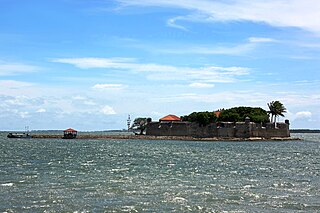
Fort Hammenhiel is a fort built around a small island between the islands of Kayts and Karaitivu of Jaffna Peninsula in Northern Sri Lanka.

Old Park is a 27 acre urban park in the city of Jaffna in northern Sri Lanka. It was originally built in the 19th century as the gardens and grounds of the residency of the British Government Agent for the Northern Province.

Mantri Manai or Manthiri Manai is a historic palace situated in Nallur, Jaffna, Sri Lanka. It is one of the archaeological protected monuments in Jaffna District and was listed by the Sri Lankan government in 2007.